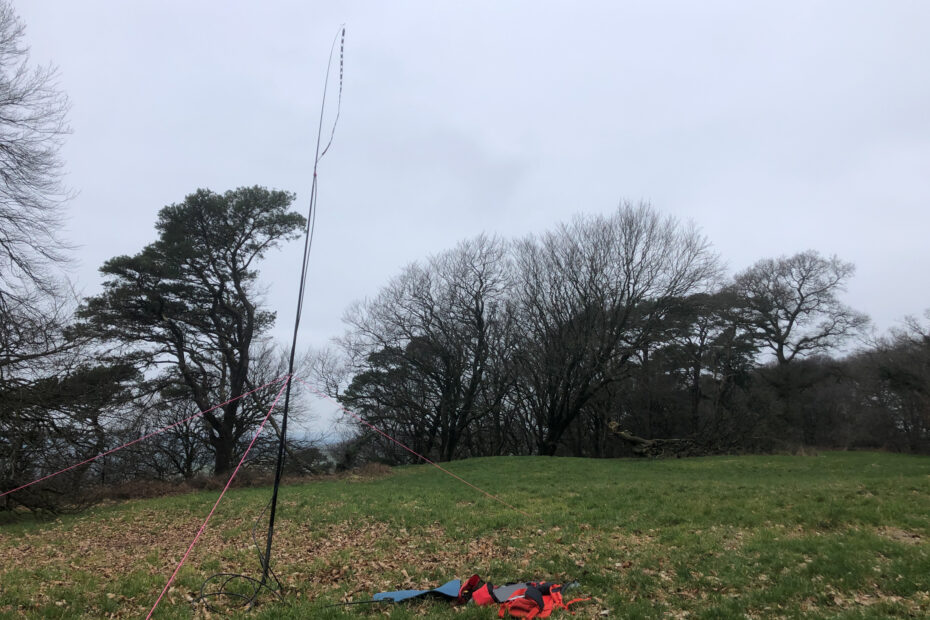Lewesdon Hill is a small lump just to the north of Bridport, Dorset. Rising up to 286m, it’s not exactly like scaling the highest peaks, but I was still breathing quite hard when I arrived on the summit… that last bit is quite steep enough!
If you want to find your own way to the top, I can do nothing else than recommend G0POT’s activation notes (here) – which are all you need.
Despite its diminutive stature, Lewesdon Hill was to figure large in my achievements in QRP operations and SOTA activations.
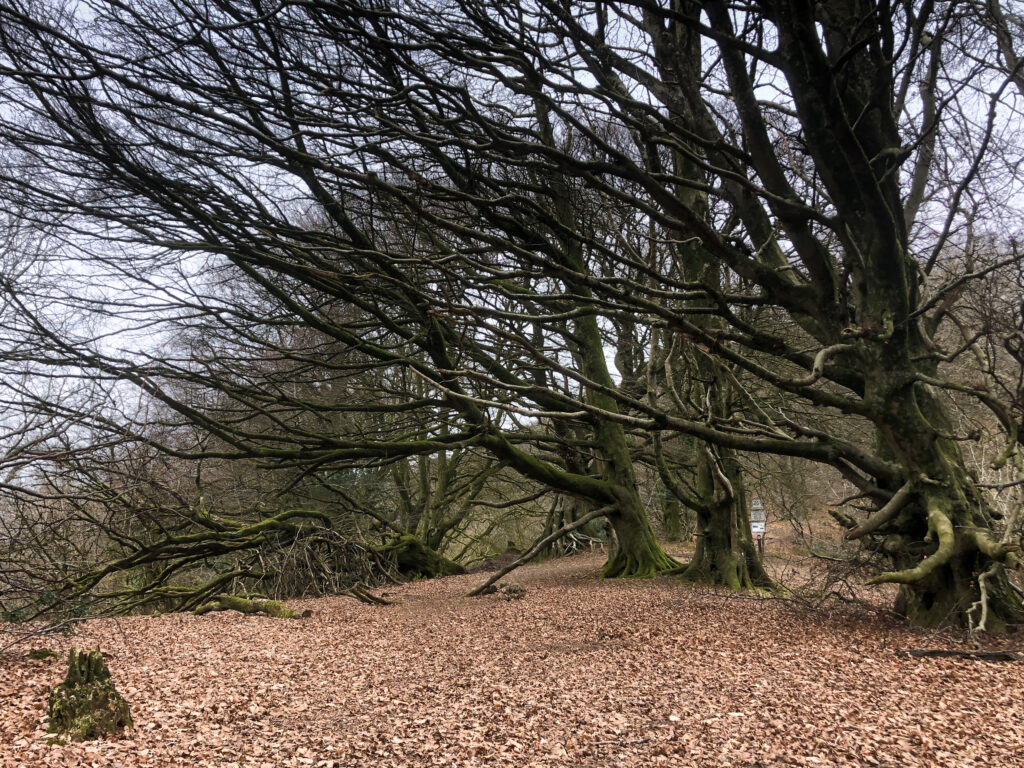
The idea to activate this hill came about as a local (to me) amateur radio club was to have a Field Day at Chard, which is a few miles from my location. I’d already activated Dunkery Beacon and Wills Neck, and Lewesdon Hill is just a few miles away from me. The notion of activating the hill using 2m, and tying it in to the Field Day was born…
Filling up the rucksack with the obligatory flask (which I’d forgotten for the Wills Neck activation), 6m fishing pole, mast guys, SlimJim antenna and the Yaesu VX-120; I then pondered on operating HF too.
So in went the uSDX+ transceiver and 1/4-wave vertical (made out of speaker wire) for 20m.
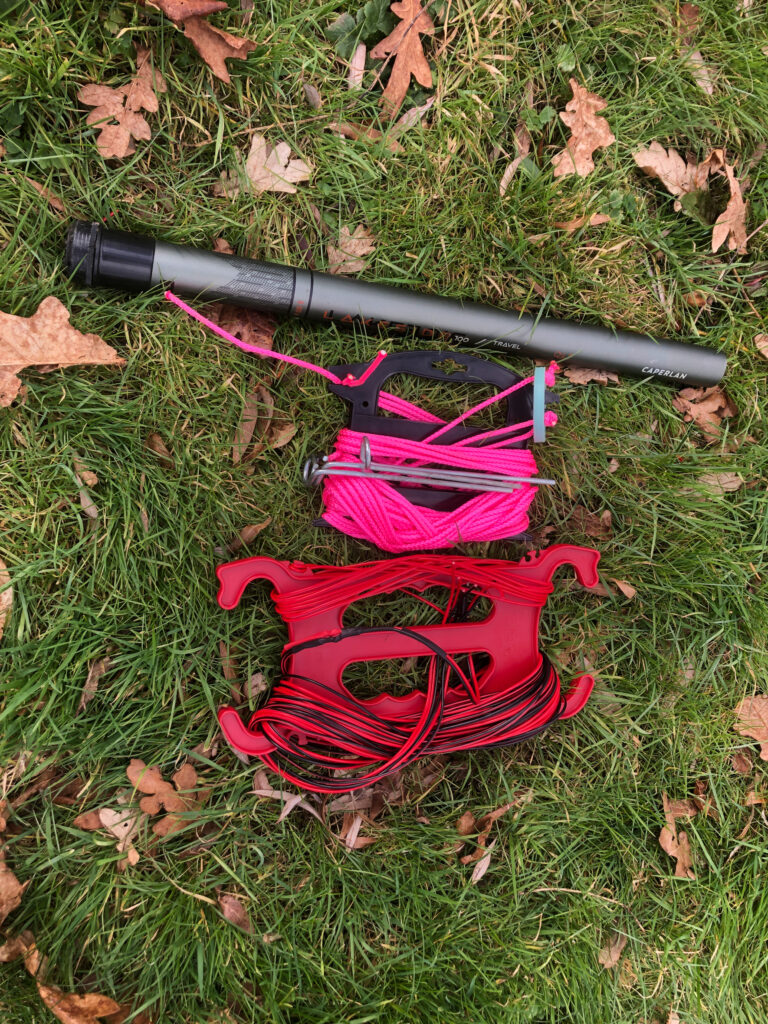
VHF Operation on 2m
The Yaesu VX-120 is an absolutely fantastic handheld radio… and they are cheap. Mine cost me little more than a Baofeng (which I also own) and the performance is chalk and cheese. The Baofeng’s are great radios and I’ve logged more than a few QSOs via the FM satellites using one, but for SOTA, the VX-120 has proven itself and I’d recommend either it, or the VX-170 to anyone.
A couple of calls out on 145,500MHz and we were on the way to activating the hill with the necessary four calls. One of these was back to the guys setting up at the Field Day, so that was mission accomplished on that front. And then, for a moment, it went a little bit mad! I had a mini pile-up, worked through those stations (its all much more relaxed than HF) and made some great contacts into Wales, including a couple of Summit-to-Summit (S2S) contacts.
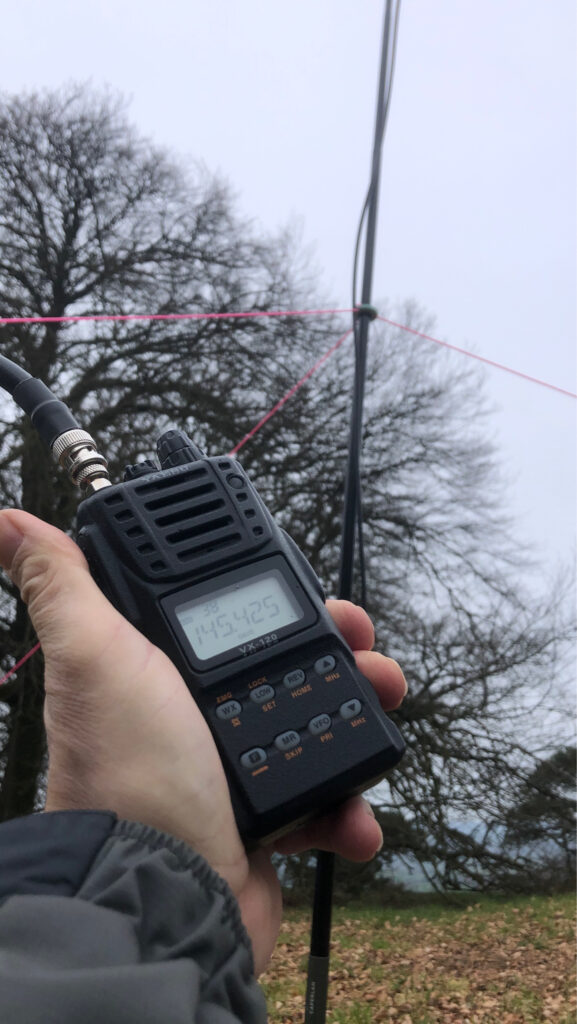
I’d easily broken the four required calls and made some fabulous contacts on VHF and so it was time to move from 5W VHF FM, to 3W HF USB…
HF Operation on 20m
Setting up the 1/4-wave vertical, and the attending counterpoise system comprising of six radials, I whipped out the NanoVNA to check the SWR. Horror! I’d made the antenna just a few days before and cut the radiating element to size, giving me an SWR of around 1.2:1.
The NanoVNA told me that the SWR was now 3:1 and it was obvious that the antenna’s resonance had moved higher up the band (actually outside of 20m). It was too short and I don’t possess an ATU to help. There was nothing for it bu to cut 6″ / 15cm off of one of the counterpoise radials, and use it to lengthen the radiating element by twisting the two together. Neat, it wasn’t. But it did do the trick 🙂
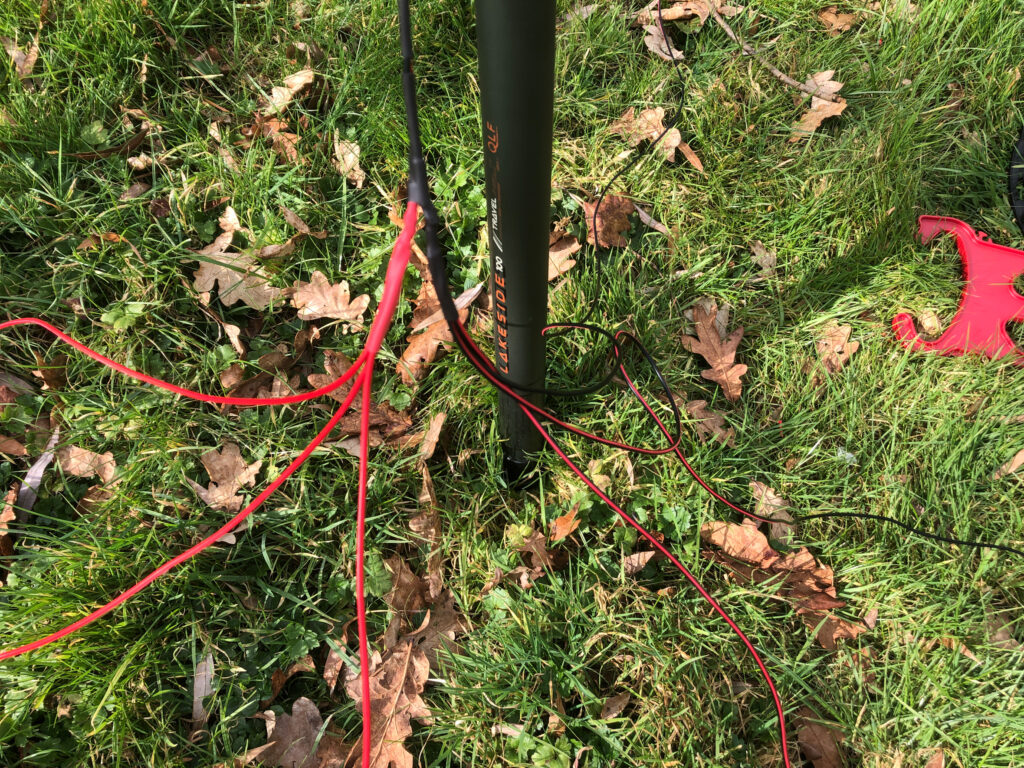
Antenna sorted, it was time to connect up the uSDX+, tune into 20m, find a quiet spot and then ‘spot’ myself on the SOTA website.
The one thing that I had totally overlooked was it was the start of the ARRL International DX Contest… no-one in Europe was interested in having a chat, however briefly, with a QRP station sat on top of a small earthen mound in Dorset. The second problem was that there was nowhere quiet to setup my stall… with just about everyone running at least a kilowatt, my ~3W wasn’t going to cut it.
I did manage to get a couple of extremely brief contacts with a few stations in Europe, but most spent longer telling me in no uncertain terms that this was a contest and therefore, they weren’t going to waste their time giving me report, than if they’d just given me a 59 and be done with it.
And then, with my QRP setup, with the antenna literally made out of two pieces of wire just twisted together (not even any tape holding the connection!), AA1K unbelievably responded to my call.
That was 5,634km on barely 3-5W.
Buoyed by that success, I found a slightly quieter spot, put something out on the SOTA website and called “CQ SOTA…”. Within moments I was at the centre of a pile-up, although this one was not quite so relaxed as the one on 2m earlier on! I logged more S2S stations in France and Italy, worked Greece, Finland and Sardinia amongst others.
Up on 14,344MHz, I found a net, who were not part of the mayhem going around on the rest of the band, so I called in. It took a few attempts but I made contact with VY2WW in Canada (over 4,300km). My pride at making the distance with my 3W was somewhat dashed when he commented that it “sounded like it was 3W”, before telling me he was running 1kW… still, I logged the contact and left it at that.
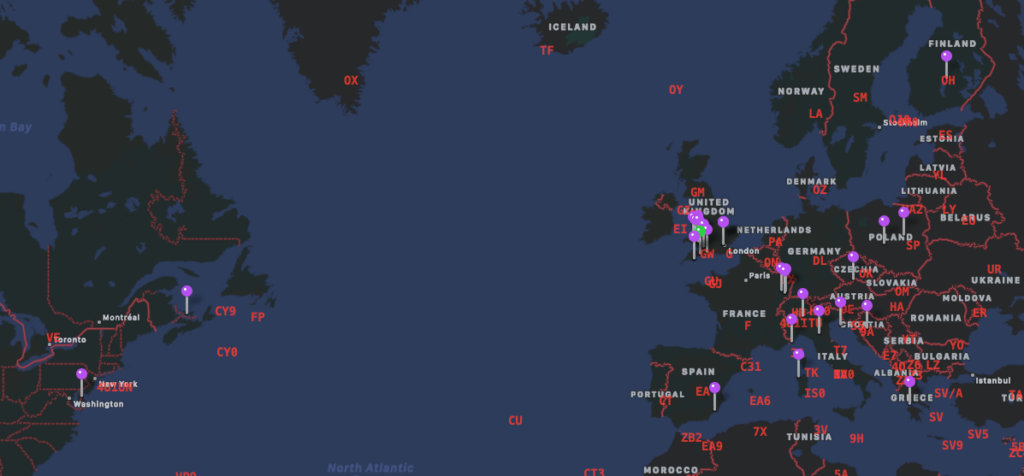
As an aside, and just to prove it wasn’t a complete fluke, the following day I managed another contact to the U.S. using the uSDX+ radio and a speaker wire antenna…
